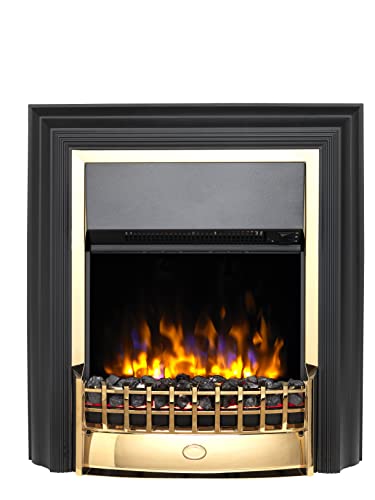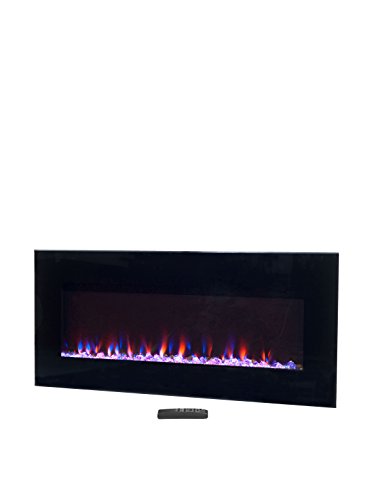
Fireplaces And Stove
Add a review FollowOverview
-
Sectors Training Instructor
-
Posted Jobs 0
-
Viewed 60
Company Description
What’s The Current Job Market For Wood Burner Fireplace Professionals Like?
How to Get the Most From a Wood Burner Fireplace
Wood stoves, in contrast to traditional open fireplaces, are engineered to burn wood. This allows them to meet stricter emission regulations.
Wood burning stoves produce dancing yellow flames and cosy crackling sounds. They also give you warmth and a warm sensation. However, the smoke it creates includes carbon monoxide and harmful air pollutants such as formaldehyde, benzene and polycyclic aromatic hydrocarbons.
Efficient
Fireplaces And Stove and stoves that burn wood provide beautiful and natural heat to your home, but they are also extremely efficient. A high-quality wood burner can have an Ecodesign rating of up to 77 percent. It is crucial to get the most value of your log burner particularly with the increasing energy costs. The good thing is that it’s much easier than ever to do!
The moisture content of firewood is a key factor that determines how efficient a stove that burns wood is. We recommend using only dried and seasoned wood that has dried over a period of at least one year, and in some cases, two years. The drier the wood the more efficiently it burns, which results in less smoke and less harmful emissions.
 Another great benefit of a wood-burning stove is that it’s an eco-friendly source of fuel, which is fantastic for the environment. When you purchase locally-sourced wood, you can also help to contribute to the active management and conservation of forests. This is great for wildlife.
Another great benefit of a wood-burning stove is that it’s an eco-friendly source of fuel, which is fantastic for the environment. When you purchase locally-sourced wood, you can also help to contribute to the active management and conservation of forests. This is great for wildlife.
In terms of maintenance involved, the sole requirement for a wood burner is to frequently take out and dispose of the ash. It’s somewhat of a hassle but it’s worth it to get the maximum heat out of every log. If you wait for the ashes 2-3 days to cool completely, they can also be used as a non-toxic and environmentally friendly melting ice. They can also be used to polish jewellery or absorb odors.
A wood burner fireplace is a truly timeless classic. While they may be less popular than gas fires but there’s no denying the appeal and appeal of a roaring fire. They’re perfect for cosying in the cold winter nights and are an ideal way to create an inviting and warm space in the heart of your home. Invest in a quality wood stove and you’ll be enjoying the benefits for years to come! Our chimney sweeps are available to help you get the most from your stove. Give us a call today to learn more.
Low Carbon
Wood burners that are efficient and clean are the most efficient option to save money while keeping your home warm. As an added benefit they also aid in local woodland management, a great way of supporting the wildlife in your local area.
Wood-burning fireplaces and stoves create very little pollution if they are properly maintained and are used with dry, seasoned firewood. However, if they’re not well maintained or used with poor quality wood the smoke that is produced by them can contain fine particles (known as particulate pollution) that can irritate the lungs and other organs. It also contains carbon monoxide and harmful air pollutants such as formaldehyde, benzene and polycyclic aromatic hydrocarbons. Inhaling air pollution can cause irritation of the lung and lead to asthma attacks, wheezing, coughing and lung irritation. It can also lead to cancer, heart disease or premature death.
Some people fear that using a wood burning stove could contribute to climate change, but this is not necessarily true. Wood burning produces energy that is carbon neutral. The tree absorbs carbon dioxide over its lifetime. After burning carbon dioxide is released into the atmosphere.
As the wood is sourced locally, it reduces the amount of pollutants released when it is transported. It is important to use hardwoods that are seasoned and of high quality. They burn longer and more evenly than softwoods.
Modern wood stoves, such as those manufactured by Charlton & Jenrick, emit significantly less pollutant than older stoves. They have been certified to meet 2020 EPA standards which are significantly stricter than earlier emission limits.
To avoid the buildup of exhaust in your home, all wood burning stoves should be vented to the outside. By keeping the flames in the vicinity of the logs and ensuring that you use dry, seasoned and dry wood and all our clean burn and DEFRA exempt stoves produce very clear exhaust and have particulate levels 60 percent or less below the DEFRA limit.
A wood-burning stove that has a catalytic converter is the ultimate low carbon heating option. These units re-ignite gases and particles released from the initial combustion in a second stage by mixing them with superheated air. They then funnel the remaining gasses and particulates through a catalytic combustion combustor for an additional and final combustion, further the reduction of emissions to levels much lower than the standards set by the government.
Clean Burn
Cleanburn wood stoves are made to burn fuel with the greatest efficiency that is achievable. This results in the emission of a small amount of particles into the air when burning wood. The stove’s air management system regulates the intake and exhausting of gases, ensuring that the combustion process is conducted in a sealed, controlled environment. It also regulates the flame’s height to maximise heat output and minimise emissions.
This means your chimney and the surrounding area will be much cleaner than older stoves. Particulate matter, also known as particle pollution, from incompletely burned wood can trigger respiratory problems, such as wheezing and coughing, and can contribute to heart disease, stroke, diabetes, and other serious illnesses. Air pollution from wood burning is also an element that contributes to poor urban air quality.
Smoke from poorly combusted wood has fine particulate pollution and hazardous air pollutant such as carbon monoxide and other hazardous air pollutants such as nitrogen oxides and volatile organic compounds (VOCs), benzene and formaldehyde. These particles can be absorbed into the lungs, as well as other organs, causing discomfort and damage and even death. Airborne dust can also harm the surfaces of your home and create the impression of a rough surface to rooms.
It’s important to use only high-quality, seasoned and dried firewood when you use your fireplace with a wood burner. Hardwoods like oak beech, ash and are the best choice for heating. Hardwoods are dense and have a higher BTU than softwoods. They also have more heat.
You should also determine if your local authority has any rules regarding wood burning. These may include nuisance/odor rules and visible emissions or the opacity limit for smoke.
 If you have a wood burner with glass doors it is important to keep the glass free of dirt and deposits. This can be done with dry cloths or oven cleaner spray. You can also add bicarbonate soda and water to the glass.
If you have a wood burner with glass doors it is important to keep the glass free of dirt and deposits. This can be done with dry cloths or oven cleaner spray. You can also add bicarbonate soda and water to the glass.
Regular maintenance of your stove and chimney is also essential. This includes regular chimney cleanings to eliminate creosote and ensure the proper operation of the flue. Also be sure to mark dates for regular inspections in your calendar, as this will allow you to avoid costly repairs and extend the longevity of your wood burner.
Low Maintenance
Wood burning fireplaces are popular because they provide a natural warmth. This kind of fireplace requires some maintenance and upkeep. The chimney, flue, and stove are all potential sources of house fires, if they’re not maintained and cleaned regularly. They also provide warmth in the event of a power outage, especially during winter storms where tree branches can fall and power lines can be ripped down.
If you use a wood stove to heat your home, you will reduce your carbon footprint when compared to other fossil fuel sources like gas. Modern wood stoves and inserts are designed to comply with EPA (Environmental Protection Agency) standards, which means that they emit very little carbon dioxide. The more seasoned wood you use the more efficient your stove will be. You’ll require less wood to generate the same heat.
These fireplaces require some upkeep and attention, including making sure they are placed away from burning materials and a screening is in place. Cleaning the grate of debris and ash will allow airflow, which will prevent the fire from dying too quickly and keep your indoors clean. It is important to have your stove and chimney swept at least two times per year to avoid creosote accumulation that could create a fire hazard or clog and limit circulation.
It may take some time for homeowners who are new to the area to learn how to light, ignite and maintain a steady fire in the fireplace. But, once you’ve achieved the art of creating and maintaining the fire in your wood burner, it can be a source of constant enjoyment that provides heat and warmth for your home all year long.
Wood burning fireplaces have been in use in a variety of forms for over 500 years and they’ve regained popularity because of their efficiency, sustainability, and the natural warmth and smell of real wood. Talk with your local Regency dealer about the benefits of wood stoves or inserts for your home if you’re looking to buy an upgrade to your heater.








